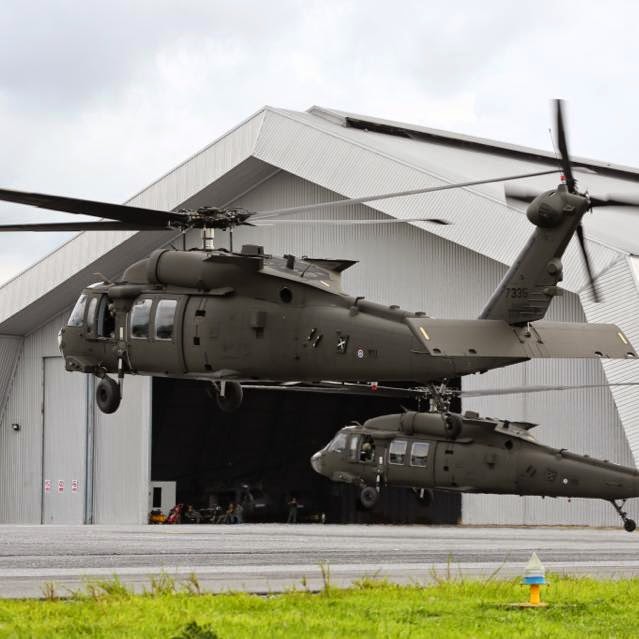Understanding the Mechanics and Engineering Behind Uh 60 Helicopters
The UH-60 helicopter, commonly known as the Black Hawk, stands as a pinnacle of modern rotorcraft innovation, personifying a mix of durable design and elaborate technicians. As we peel off back the layers of the UH-60's layout, a world of intricate systems and meticulous design comes to light.
Background of UH-60 Helicopters
The background of UH-60 helicopters traces back to the late 1970s when the USA Military looked for a functional and sophisticated energy helicopter to change its aging fleet. In reaction to this requirement, the Sikorsky Airplane Corporation created the UH-60 Black Hawk helicopter. Introduced in 1979, the UH-60 rapidly came to be a staple in armed forces operations due to its outstanding abilities.
The UH-60 was made to master a selection of objectives, including troop transport, clinical evacuation, electronic war, and special operations. Its ability to adapt to different duties made it an important possession to the U.S. uh 60. Military and other army forces worldwide
Throughout the years, the UH-60 platform has actually undertaken a number of upgrades and variants to enhance its efficiency and keep speed with progressing goal demands. These helicopters have seen substantial service in problems such as the Gulf Battle, Afghanistan, and Iraq, showcasing their dependability and versatility in diverse operational atmospheres. The UH-60's abundant history is a testament to its long-lasting legacy as a top energy helicopter.

Engine and Power Systems
Using innovative propulsion technology, UH-60 helicopters are equipped with sophisticated engine and power systems to ensure optimum performance and reliability in a series of operational situations. The UH-60, generally called the Black Hawk, is powered by two General Electric T700-GE-701D engines, each efficient in providing up to 1,940 shaft horse power. These turboshaft engines provide the necessary drive for the helicopter to perform its objectives effectively, consisting of army transport, medical discharge, and battle assistance.

Rotor System and The Rules Of Aerodynamics
How do the blades system and aerodynamics of UH-60 helicopters add to their functional efficiency and trip capabilities? The blades system of the UH-60 helicopter plays a vital function in giving lift and propulsion. The UH-60 features a four-bladed, totally verbalized blades system that allows for high maneuverability and stability throughout flight. This design makes it possible for the helicopter to perform a large array of goals, from transportation and clinical emptying to combat operations.
The rules of aerodynamics also play an essential role in the performance of UH-60 helicopters. The streamlined body and blades blade layout reduce drag, permitting the helicopter to attain greater speeds and far better fuel efficiency. The aerodynamic layout of the UH-60 additionally contributes to its capacity to operate in diverse environmental problems, including warm temperatures and high altitudes.
Avionics and Trip Control Systems

In its detailed coordination with the blades system and the rules of aerodynamics of UH-60 helicopters, the avionics and flight control systems form a critical network of innovations forming the airplane's functional More Bonuses capacities. In the UH-60, these systems consist of digital screens, communication radios, General practitioner navigation, weather radar, and auto-pilot systems.
The trip control systems of the UH-60 are accountable for converting the pilot's inputs right into the proper changes to the rotor system, guaranteeing secure trip and ability to move. These systems contain hydraulic actuators, servos, and computers that collaborate to control the tail and primary rotors, as well as other flight control surface areas. By precisely taking care of the helicopter's trip dynamics, these systems make it possible for pilots to carry out a wide variety of missions, from transportation and search-and-rescue to deal with operations, with precision and self-confidence.
Function and Applications in Aviation
Avionics systems in UH-60 helicopters include a variety YOURURL.com of digital systems that help in navigating, interaction, monitoring, and managing different airplane features. These systems include digital displays, auto-pilot systems, interaction radios, GPS navigation tools, and weather radar. Additionally, these systems incorporate security attributes such as autopilot modes, terrain awareness warning systems, and stability augmentation systems to improve the total safety and click for info functional capabilities of the UH-60 helicopters in different goals, consisting of troop transport, medical discharge, search and rescue, and aerial firefighting.
Conclusion
In conclusion, the UH-60 helicopter is a versatile airplane with an abundant history and progressed design. Its engine and power systems, rotor system, the rules of aerodynamics, avionics, and flight control systems all function together to make it a dependable and reliable equipment.
In its intricate coordination with the blades system and the rules of aerodynamics of UH-60 helicopters, the avionics and flight control systems create a crucial network of technologies shaping the aircraft's functional capacities.The flight control systems of the UH-60 are responsible for equating the pilot's inputs right into the ideal adjustments to the blades system, making certain stable trip and ability to move. Avionics systems in UH-60 helicopters incorporate a range of digital systems that help in navigating, communication, tracking, and managing various aircraft functions. In addition, these systems integrate safety and security features such as auto-pilot settings, terrain recognition advising systems, and security enhancement systems to enhance the general safety and operational abilities of the UH-60 helicopters in various goals, consisting of army transport, medical discharge, search and rescue, and airborne firefighting.
Its engine and power systems, blades system, aerodynamics, avionics, and flight control systems all work with each other to make it a trustworthy and efficient machine.